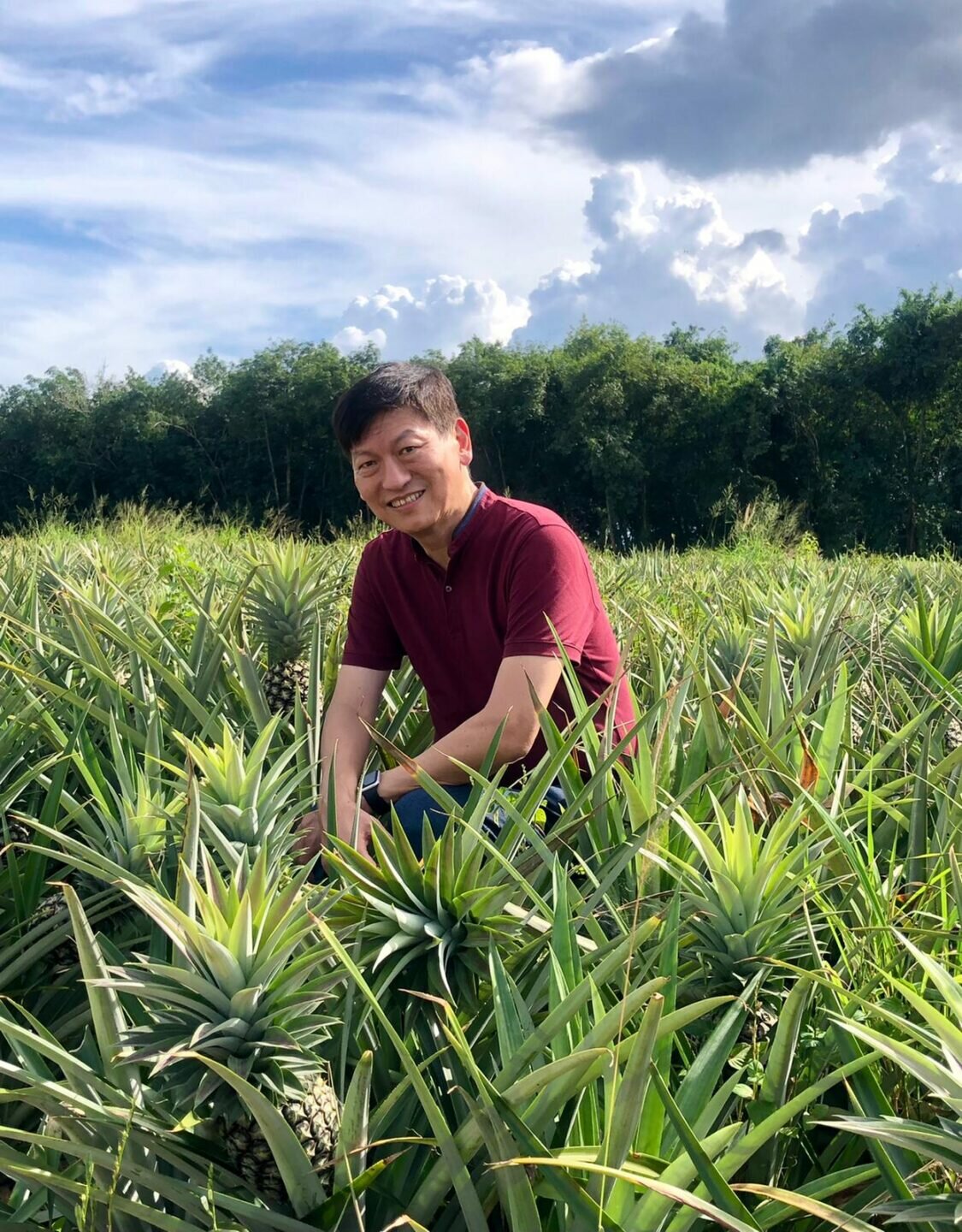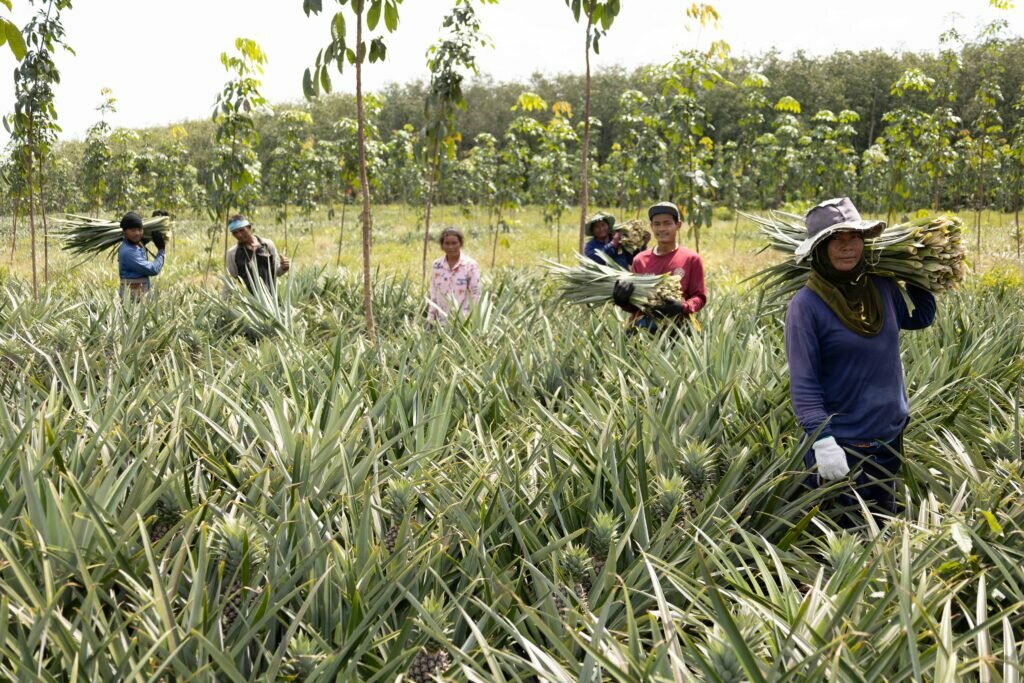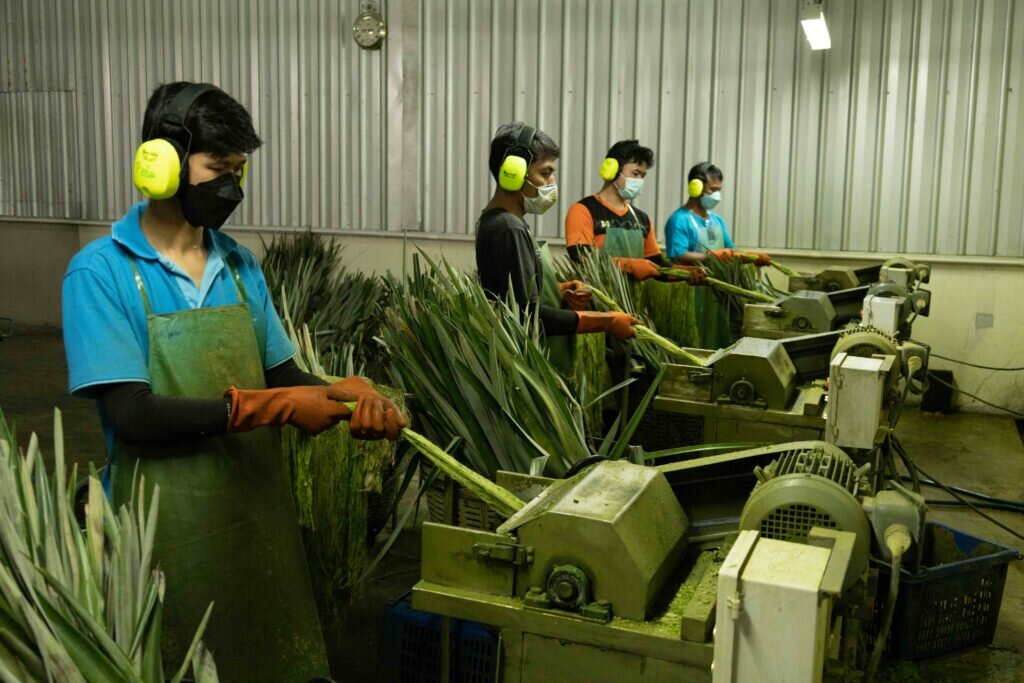The pineapple has proved itself to be highly versatile. Besides being considered a sacrilegious pizza topping, the fruit has been, oddly enough, hailed as a symbol of hospitality at techno music festivals in recent years. It even managed to take centrestage in that bizarre 2016 hit song PPAP (Pen Pineapple Apple Pen) by Japanese comedian Kazuhito Kosaka aka Pikotaro.
Now, the fruit could very well become an integral part of our wardrobes.
We’re talking about clothes spun from pineapple leaves, to be exact.
One of the companies involved in this is Singapore-headquartered Nextevo, which has since its inception in June 2019, been transforming pineapple leaves into fibres suitable for textile manufacturing. The company’s clientele currently comprises apparel, footwear and upholstery companies.
The man behind this idea is Nextevo founder Harold Koh, who during his nine years as CEO of Great Giant Pineapple – one of the world’s largest producers of the fruit – got to see just how much agricultural waste is generated by the industry in the region.
“Based on my own calculations, there are between 600 to 800 million metric tonnes of agricultural waste produced in South-east Asia per year, and the burning of this waste creates huge amounts of carbon dioxide,” says Koh. “I thought it would be great if I could turn a portion of this waste into a value-added product and help farmers along the way.”
Today, Nextevo buys pineapple leaves that would otherwise be discarded from some 400 farmers in Thailand and Indonesia, helping bump their annual incomes by up to 30 percent. The leaves are then turned into fibres with the use of decorticating machines before being blended with other types of sustainable materials such as recycled polyester and Lyocell, which is made of wood cellulose.
The goal, says Koh, is for Nextevo to source pineapple leaves from 5,000 farmers in the region by 2025.
The fibres created from pineapple leaves, he notes, are smooth and breathable, thus making them highly suitable for apparel. The production process is also more sustainable than that of cotton, at least according to the preliminary life cycle assessment performed by an external consultant that Nextevo commissioned.
In a move that signals its optimism about the potential of this relatively newfangled fibre, Nextevo is currently focusing on scaling up operations by creating its very own decorticating machine that can handle much larger volumes of leaves. It is also in the midst of cementing deals to procure pineapple leaves from two other countries in Sout-heast Asia.
“We believe that products that are sustainable, functional and have good performance will see greater demand in the years to come as the world is now turning towards more sustainable options for fibres. Our pineapple leave fibres fulfill all three prerequisites,” says Koh.
“We’ve also conducted an independent test that showed pineapple leave fibres are suitable for use as baby apparel. This is another market we could tap into in the future.”
Koh’s optimism about the market prospects isn’t unfounded. Earlier this year, sustainable fashion innovation platform Fashion for Good launched its Untapped Agricultural Waste Project to explore and support new sources of sustainable materials that would help the fashion industry achieve net-zero emissions.
Pinatex, an eco-friendly leather crafted using the cellulose fibres of pineapple leaves, has also been somewhat of a hit in recent times – this innovative material has been used in room furnishings within the luxury Hilton Bankside Hotel in London.
Looking ahead, Nextevo plans to expand its repertoire to include processing discarded coconut husks into soil amendments and coir fiber that can be used to create cushions and mattresses. Turning banana stems into value-added, sustainable products is also on the cards.
“I think that sustainability is everyone’s responsibility. I know that I’m not going to singlehandedly save the world with this business,” says Koh. “But, hey, at least I’m not destroying it further.”


